Hey, Java enthusiasts! We are all aware that Encapsulation is one of the foundations of object-oriented programming. It helps to protect the internal state of an object and ensures that it can only be changed in a controlled manner. Although essential Encapsulation is excellent, a whole universe of advanced methods will significantly enhance your coding ability.
Consider yourself with a Java Certification, working on a challenging Java program. You have your public getter and setter techniques and private variables in place. All seems to be going smoothly. However, as the project expands, you encounter unanticipated changes in your object states, code maintenance challenges, and thread safety issues. At this point, you understand that basic Encapsulation might not be sufficient.
Here comes the advanced techniques of Encapsulation in Java. Advanced approaches provide more control, security, and better maintainability. They enable us to manage more challenging situations, guaranteeing that our code stays strong and effective as we develop. This blog will discuss some of these advanced Java encapsulating methods. You can understand and apply them in your code according to the requirements.
Table Of Contents
- Understanding Encapsulation
- Advanced Techniques
- Conclusion
Understanding Encapsulation
Let's quickly understand Encapsulation before we delve into the advanced methods. Typically, Encapsulation groups the data (variables) and methods (functions) that run on the data into one unit. This system conceals an object's internal representation from view.
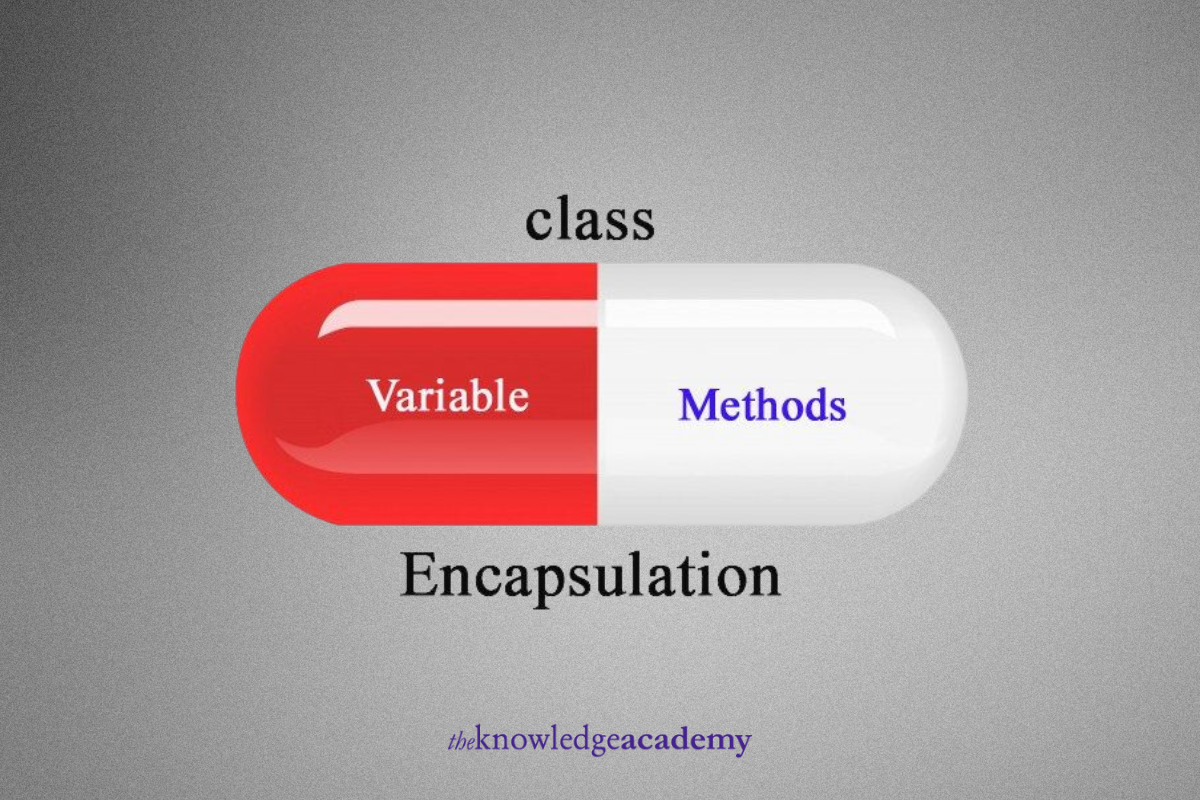
Basic Encapsulation Example
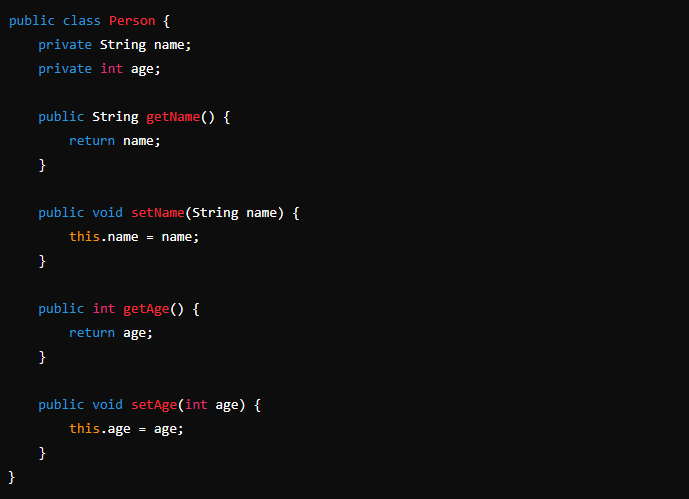
With getter and setter techniques, the Person class in the previous example captures the name and age fields and offers limited access.
Advanced Techniques
Encapsulation with Immutable Objects
Immutable items are those whose condition cannot be altered once they are produced. This is a potent method for reaching thread safety and preventing unanticipated side effects. Java lets one accomplish this by:
- Making all fields final
- Not providing any setters
- Ensuring that mutable fields are not directly exposed
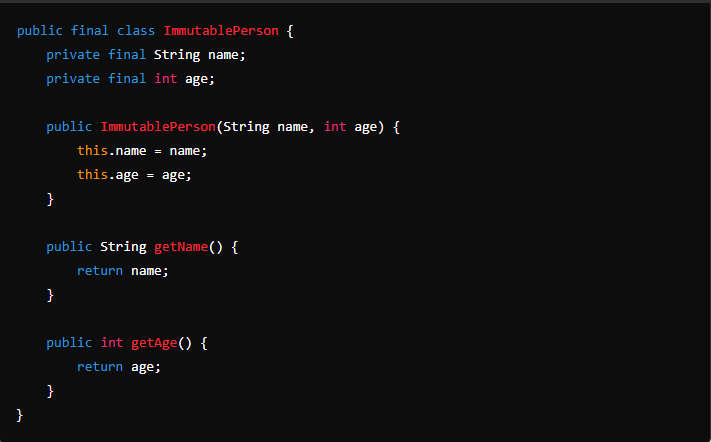
Example of an Immutable Class
Encapsulation Utilising Inner Classes
Inner classes—nested classes—can capture assistance classes inside a contained class. This not only maintains the related classes together but also limits the view of the assistant classes.
Example with Inner Class
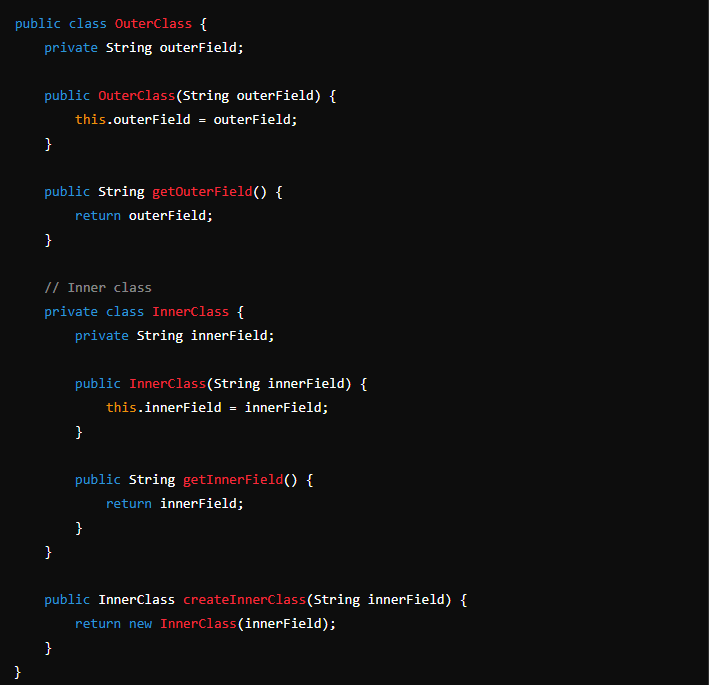
InnerClass is contained inside OuterClass and cannot be accessed straight from outside.
Encapsulation in Inheritance
Designing a class hierarchy requires careful control of inherited member access. Access modifiers like protected and default help regulate visibility inside the package or subclasses.
An inheritance example

In this case, but not from outside the class hierarchy, the protectedField and protectedMethod are available in the DerivedClass.
Encapsulation with Accessor Methods
Validation and transformation logic are two advanced accessor techniques that help to guarantee the internal state stays constant and valid.
Example with Advanced Accessor Methods
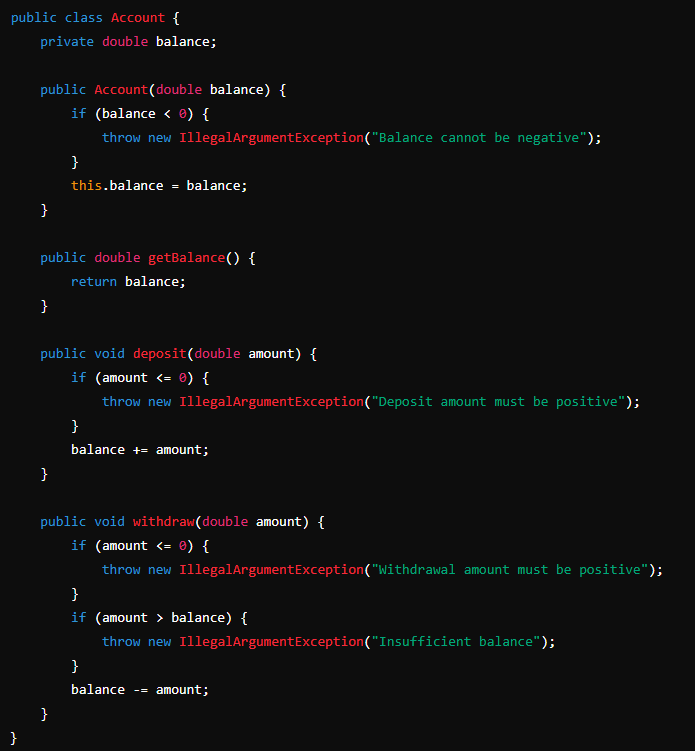
In this example, the Account class ensures that the balance is always valid by using validation logic in the accessor methods.
Encapsulation with Interfaces
By defining the behaviour of encapsulated classes using interfaces, one may clearly specify what the class is allowed to do without revealing its implementation specifics.
Interactions as an Example
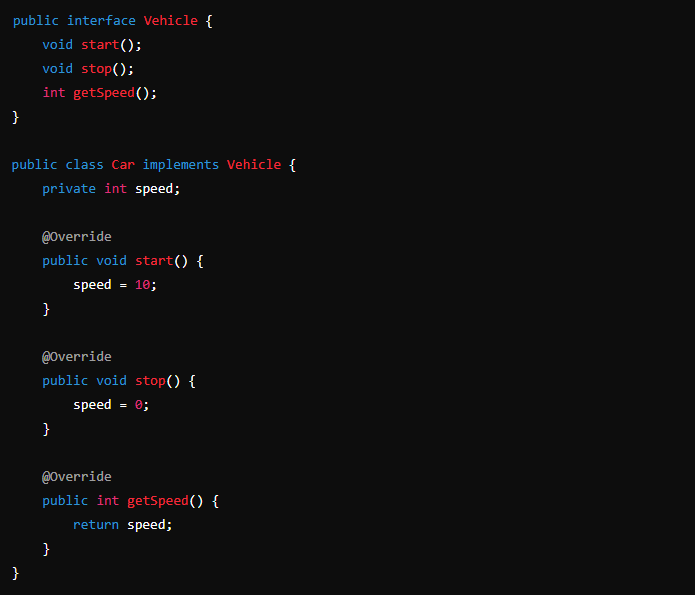
Here, the Car class uses the Vehicle interface, therefore encapsulating its implementation and revealing the behaviour specified by the interface.
Encapsulation with Builder Pattern
The Builder Pattern is a versatile design tool for creating intricate shapes. It is beneficial when an object has several optional parameters, or the building process consists of several steps. It improves Encapsulation by concealing the object creation process's complexity and simplifying and maintaining the code's maintainability.
Example with Builder Pattern
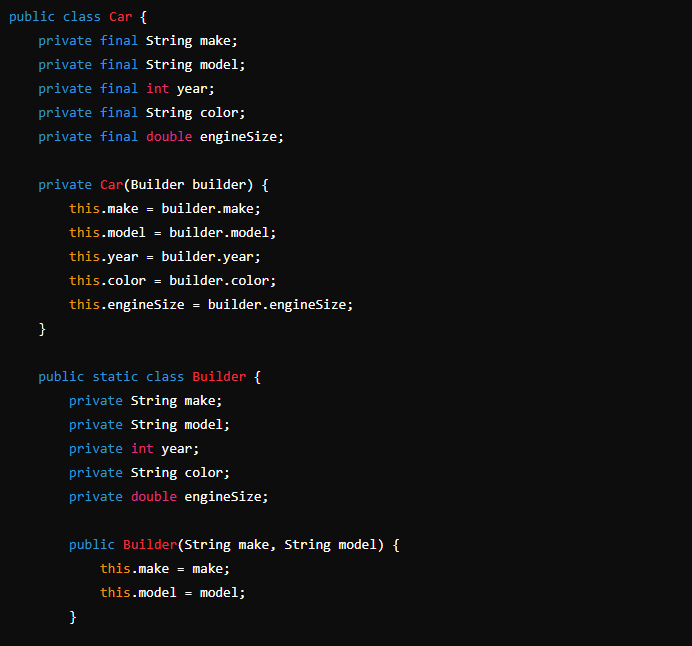
Here, the Builder Pattern helps the Car class capture the building process. This method guarantees the immutability of the Car objects and a cleanly separated construction logic from the object itself.

Conclusion
Encapsulation is more than simply a basic OOP idea. It is an excellent tool for producing strong, manageable, and clean code. Investigating and using these advanced Java encapsulating methods will help you significantly improve your programming abilities and create safer and more effective programs.
Whether your Java knowledge is new or advanced, learning these methods will enable you to produce better code and confidently address increasingly complex challenges. Consider The Knowledge Academy to advance your skills in your Java programming journey.

















